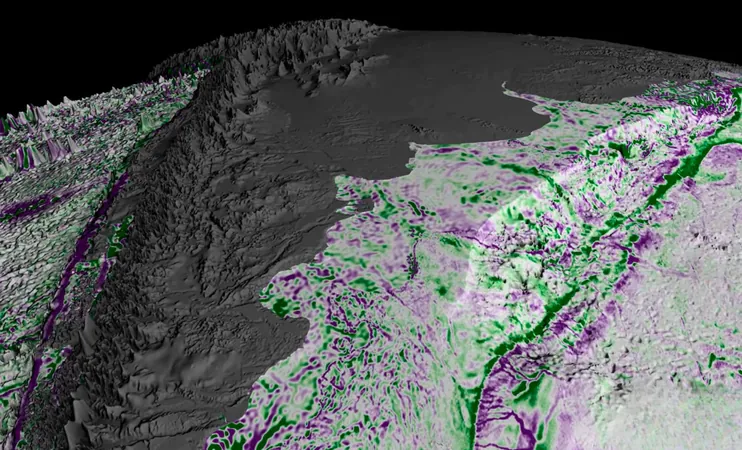
Groundbreaking Discovery: 100,000 Hidden Mountains Found Under the Ocean!
2025-04-09
Author: Kai
A Revolutionary Ocean Mapping Breakthrough
Brace yourself for a stunning revelation in oceanography! Scientists have unveiled one of the most detailed ocean floor maps ever created, thanks to advanced technology from the SWOT satellite. This groundbreaking map has identified a staggering 100,000 submerged mountains, known as seamounts, lying unseen beneath the ocean's surface.
The Power of the SWOT Satellite
Traditionally, charting the ocean floor has taken a backseat to mapping celestial bodies like the Moon, resulting in only about a quarter of the seabed being documented with sonar on ships. Enter the SWOT (Surface Water and Ocean Topography) satellite—a breakthrough collaboration between NASA and the French space agency CNES. Equipped with state-of-the-art sensors, the satellite captures minute variations in sea surface elevation, leading to remarkable insights into ocean floor features.
Unveiling the Ocean's Hidden Giants
Among the most astonishing findings from the SWOT satellite are those nearly 100,000 previously unidentified seamounts. Many of these underwater mountains are less than half the size of larger known seamounts, fundamentally changing our understanding of oceanic geography.
These seamounts are crucial players in the planet's ecosystem; they influence deep-sea currents and often serve as vibrant hotspots teeming with marine life, thanks to their nutrient-rich slopes. Geophysicist David Sandwell from the Scripps Institution of Oceanography emphasizes this as a major step forward in our ability to map the seabed.
Abyssal Hills: The Ocean's Ubiquitous Terrain
But that's not all! The SWOT satellite has also shed light on abyssal hills, the geological formations that blanket about 70% of the ocean floor. These parallel ridges, created as tectonic plates drift apart, have largely eluded detailed observation due to their small scale. With the SWOT satellite’s enhanced capabilities, scientists can now study these features in unprecedented detail.
Oceanographer Yao Yu, lead author of the recent study, highlights that these hills are "the most abundant landform on Earth," pointing to their crucial role in shaping ocean tides and deep-sea currents—elements that are still being explored by researchers.
Impact on Marine Ecosystems and Future Research
The newfound ocean floor features aren’t just vital for geological understanding; they hold profound implications for marine ecosystems as well. For instance, the seamounts are instrumental in steering ocean currents, which play a crucial role in nutrient distribution in the deep sea.
These nutrient-rich environments become essential havens for marine organisms, transforming barren areas into flourishing underwater oases, ultimately influencing the health of the ocean as a whole.

 Brasil (PT)
Brasil (PT)
 Canada (EN)
Canada (EN)
 Chile (ES)
Chile (ES)
 Česko (CS)
Česko (CS)
 대한민국 (KO)
대한민국 (KO)
 España (ES)
España (ES)
 France (FR)
France (FR)
 Hong Kong (EN)
Hong Kong (EN)
 Italia (IT)
Italia (IT)
 日本 (JA)
日本 (JA)
 Magyarország (HU)
Magyarország (HU)
 Norge (NO)
Norge (NO)
 Polska (PL)
Polska (PL)
 Schweiz (DE)
Schweiz (DE)
 Singapore (EN)
Singapore (EN)
 Sverige (SV)
Sverige (SV)
 Suomi (FI)
Suomi (FI)
 Türkiye (TR)
Türkiye (TR)
 الإمارات العربية المتحدة (AR)
الإمارات العربية المتحدة (AR)